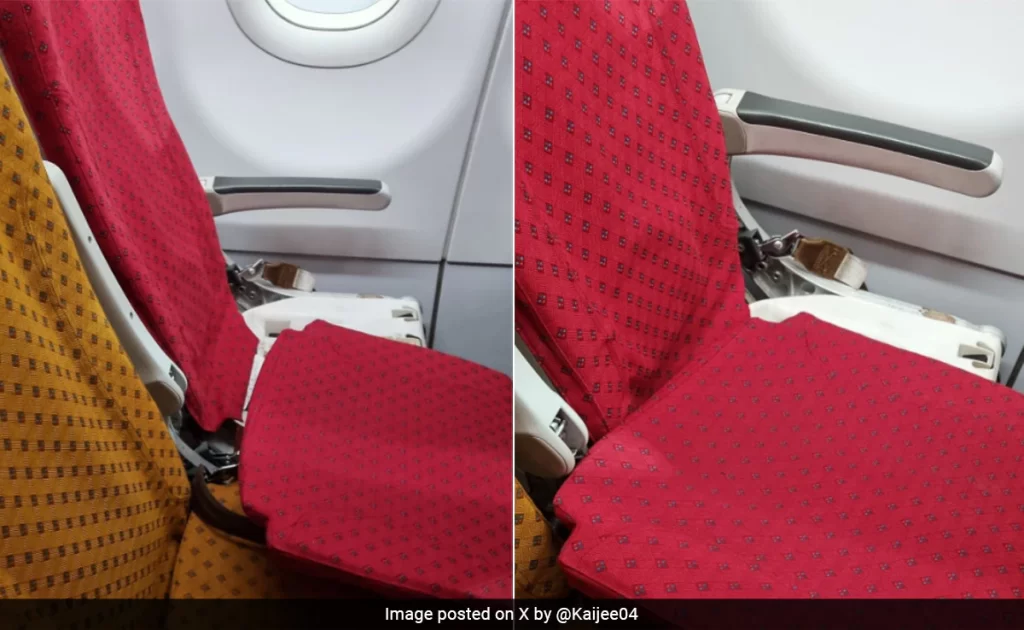Air India Passenger Flags Defective Business Class Seat, Questions Aircraft Safety
Introduction
In the high-stakes game of commercial flight, safety and customer experience walk the same path. Comfort, luxury, and faith in the overall integrity of the aircraft are expected when a consumer pays more to seat in business class. Air India was recently in the news after a business class passenger reported a faulty seat and raised wider concerns about the airline’s maintenance and safety methods. Long-standing disputes about safety regulations and the level of service in India’s national carrier have been reignited by the tragedy.
The Incident
Reports going around social media and news sites say an Air India passenger, seated business class, found a malfunctioning seat that would not recline. While the hassle itself may be understandable, what caused a stir was the passenger’s public comment questioning the safety protocols of the airline. “If such a visible and easily detectable fault went unnoticed, it raises concerns about the way the rest of the aircraft is maintained—especially the parts not visible to passengers,” the passenger, who was reportedly common tourist, said.
Despite the airline’s failure to properly identify the nature of the defect, sources claim that the consumer reported the problem to the crew before sharing their experience on social media. The message received an abundance of response, with most people writing about similar experiences and concerns.

Air India’s Maintenance Woes
Air India has come under criticism for the health of its aircraft. Despite having a long history and an important international expansion, Air India has struggled recently with outdated fleets, inconsistent maintenance plans, and subpar customer service.
Before Tata Group acquired Air India in 2022, it was owned by the government and had faced years of systemic underfunding and operational wastefulness. The airline is still in a transitional phase even though the Tata Group has since started an expensive recovery plan that includes, between other things, updating fleets, increasing customer service training, and becoming digital. Incidents like the failed business class seat show that preexisting issues are a hindrance.
Public Perception and Social Media
The influence of social media has magnified the voices of customers like never before. One tweet from an upset passenger can create massive media attention, especially when it is about sensitive issues like passenger safety. Many passengers who have had similar issues on Air India flights found resonance in the passenger’s choice to take the matter online.
Hashtags #AirIndia and #AviationSafety quickly trended soon after the post had gone viral. Some internet users instantly jumped on what they perceived to be a lack of urgency to address consumer complaints, while others rallied to defend the airline on the basis of its initiatives to modernize and the complexities of airline operations.
Safety Vs Comfort: Are They Related?
One of the best things about the situation is the inherent connection between safety and comfort. Even though a faulty seat could be a warning sign, the aircraft won’t always be in risk. When maintenance inspections ignore something is important like a non-reclining seat, passengers may wonder what else is being missed.
According to aviation experts, minor defects can accumulate and jeopardize overall operating integrity if they are routinely ignored. Wear and tear may be the cause of a broken seat mechanism, but if it is not fixed, it suggests a breakdown in the maintenance culture. On overseas flights, when crews and planes are scrutinized more, this is especially problematic.
Tata Group’s Challenge
The Tata Group views the resuscitation of Air India while a matter of national pride rather than just an economic opportunity. Since assuming control, Tata has unveiled a multi-faceted plan that includes new aircraft purchases from Airbus and Boeing, overhauling customer service methods, and spending on crew training and backend processes. But while this episode shows, the path to reform is not without its potholes.
To its credit, Air India has been quite responsive to customer grievances since the acquisition. The airline now has a more engaged social media support mechanism and has streamlined the passenger feedback process. More than reactive PR, but true transformation will involve systemic change.

Industry Perspective
In the context of international aviation while a whole, such incidents are not Air India exclusives. Even the best airlines sometimes experience technical and service glitches. The difference between good airlines and great airlines is that the latter respond quickly and openly.
Aviation regulators, like the Directorate General of Civil Aviation (DGCA) in India, keep a careful eye on airline compliance and maintenance. However, many in the industry argue that, especially during periods of high-pressure transition like the one Air India is going through, inspections by regulators should be supported by recurring spot checks.
What Passengers Expect
Today’s passengers want more than a comfortable seat, especially those who pay more for premium fares. They want dependability, accountability, and most importantly, security. A reclining business class seat may sound inconsequential, but in a situation where the client is paying $1,000 for comfort and confidence, such a performance can be quite disappointing and, naturally, alarming
In an intensifying aviation competition, customer experience can be the determinant between loyalty and churn. High standards are important to Air India’s existence and growth; they are not an option.

Moving Ahead: What Must Happen
To avoid such an incident hanging over its brand reputation, Air India must double down on:
Proactive Maintenance Audits – Periodic inspection of even small parts like seat mechanisms can avoid adverse experiences and keep maintenance staff on high alert.
Empowering Cabin Crew – Cabin crew should be empowered with tools and responsibility to escalate and resolve customer complaints real-time, perhaps even rewarding impacted passengers when deserved.
Open Communication: When businesses are transparent about issues and how they are resolved, the public’s faith is restored. A negative experience could be turned into an opening to establish a brand by owning up to faults and finding remedial measures.
Customer-Oriented Culture: The airline’s commitment to quality must be reaffirmed at every touchpoint, from check-in to deplaning.
